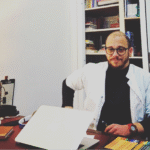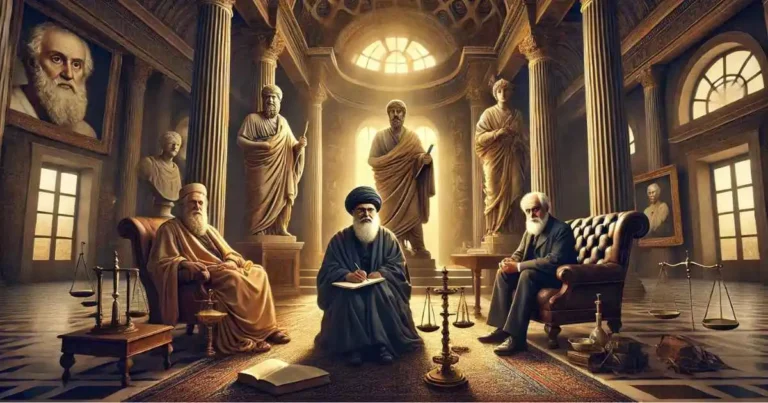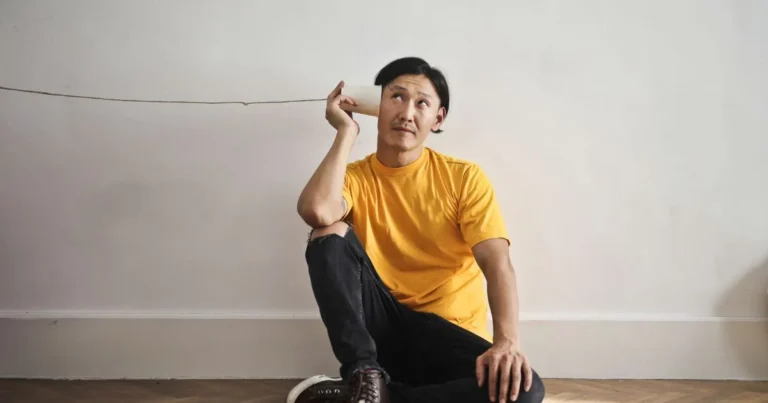Teens, AI, and the death of effort? Rethinking learning in the age of ChatGPT
“Artificial intelligence doesn’t threaten human intelligence. It challenges us to redefine it.”
Since November 2022, teenagers and young adults have discovered a new conversation partner, an inexhaustible, responsive, educational, and sometimes even comforting digital presence: ChatGPT. Whether at home, in class, on public transport, in the library, or in the privacy of their room, they turn to it to write, correct, summarize, understand, plan, or translate. Conversational AI has entered the educational sphere not with a knock, but with staggering efficiency.
School, university, homework, and even exams are no longer what they used to be. Human cognition is now entwined with the machine. But in this ongoing cognitive fusion, what happens to traditional learning mechanisms? How does the intensive use of ChatGPT reshape neurocognitive processes, psychological dynamics, and the identity formation of developing minds? What space remains for the body, movement, handwriting, slowness, effort, even boredom, all of which are essential to psychomotor and intellectual development?
ChatGPT as a symbolic figure: The new “Other”
From a developmental perspective (Erikson, 1950; Piaget, 1972), adolescence is a period of identity crisis, a time when individuals seek to assert their uniqueness while negotiating authority and social models. In this context, ChatGPT becomes a paradoxical figure: an all-knowing but non-judgmental “other,” a virtual adult without gaze, emotion, or boundaries.
This disintermediation, no need for teachers, parents, or books, creates a sense of narcissistic safety. Students are no longer exposed to social failure. They can ask, fail, correct, and ask again, without shame. This fosters a guilt-free learning relationship, which can be beneficial for anxious or inhibited students. It even supports a form of guided autonomy.
🔗 Read also: The moving mind: Why psychomotricity builds more than muscles
Still, this autonomy comes with conditions: it depends on an external agent that thinks, writes, structures, and explains on their behalf. The real question is: are teenagers actually learning, or are they merely accessing pre-thought knowledge?
Many students use ChatGPT not to learn but to produce. It becomes a machine for academic performance. The goal is no longer to understand a concept but to submit a well-written assignment. However, as Vygotsky (1934) argued, learning is a dialectical process fueled by social interactions, errors, cognitive conflicts, and human mediation. If ChatGPT replaces this human mediation, it short-circuits real learning.
From thinking to copy-pasting: when the brain hits autopilot
Regular use of ChatGPT alters the student’s functional cognitive profile. Executive functions, planning, working memory, mental flexibility, inhibition, monitoring, are increasingly underused.
- Working memory is offloaded. ChatGPT holds information, rephrases endlessly, and allows students to go back and forth. Yet according to Baddeley (2000), working memory is central to cognition: it supports comprehension, problem-solving, and reasoning. Without training, it weakens.
- Planning becomes externalized. Students no longer need to organize their thoughts, draft ideas, or build an outline. The AI does that for them.
- Metacognition, or awareness of one’s own thought processes, is diminished.
- Inhibition, a core function of the prefrontal cortex, is also affected. ChatGPT delivers rapid, fluent, and rewarding answers. Adolescent brains, hypersensitive to instant gratification (Steinberg, 2005), are tempted to skip intermediate steps in pursuit of immediate results.
This aligns with what some have termed delegated cognition (Norman, 1993): the outsourcing of mental processes to technological tools. It’s not a new phenomenon, writing, calculators, and Google are earlier examples, but the conversational fluidity of AI conceals the underlying cognitive shortcuts. Students think they understand what they’re merely rephrasing.
🔗 Explore further: When academic failure becomes more than a grade
Cognitive neuroscience shows that the adolescent brain undergoes major synaptic restructuring. Intensive use of digital tools, especially interactive ones like ChatGPT, alters:
- Fronto-parietal connectivity, crucial for logical reasoning and problem-solving tasks;
- The default mode network, involved in self-reflection, autobiographical memory, and future planning, now sidelined in favor of reward-response circuits;
- Dopaminergic plasticity, reinforced by immediate rewards (instant answers, unlimited reformulations), which reduces frustration tolerance and narrows cognitive latency.
In short, the brain is undergoing an ecological transformation. It’s no longer accustomed to building ideas slowly, pausing in uncertainty, or learning from errors. It’s becoming a brain of rapid interaction, guided anticipation, and intelligent paraphrasing, efficient, but potentially vulnerable in the absence of internal regulation.
Typing instead of writing: losing the body in learning
Psychomotor theory reminds us that all learning begins in the body. ChatGPT, however, accessed via keyboard, screen, and interface, minimally engages the sensorimotor systems. It severs knowledge from action.
- Handwriting, for instance, activates multiple brain areas: motor (premotor cortex), visuospatial (parietal lobe), and language-related (Broca’s area). It involves rhythmic, tonic, and symbolic coordination. Replacing it with typing removes a deeply embodied dimension of language.
- Thephysical time of learning, sustained gaze, breathing rhythm, posture pauses, hand movement, is reduced to a sequence of finger taps.
- Students become static: prolonged sitting, lack of movement, eye strain, and wrist tension. Learning becomes a disembodied act, diminishing multisensory integration.
Psychomotor experts emphasize that knowledge isn’t purely intellectual, it is lived. To learn is to feel, touch, move, write, fail, and recover. Exclusive reliance on ChatGPT reduces learning to a sequence of disembodied representations, stripped of lived experience.
🔗 Discover more: Mindwriting: Giving voice to thought through neural interfaces
Teaching with ChatGPT: Support, not substitute
ChatGPT does not mark the end of learning. But it calls for a reimagining of how we think, teach, and guide. Used wisely, it can become a powerful cognitive ally, a curiosity amplifier, a mirror for thought. That requires maintaining effort and uncertainty within the learning process; preserving the role of the body and gesture in education; and teaching metacognition and critical thinking to prevent unconscious delegation of thought.
The goal is not to reject the tool, but to integrate it into a neuro-ecological pedagogy, one where the human remains central, and AI stays at the periphery: a support, not a substitute.
“The real danger isn’t that AI is stealing our intelligence. It’s that we sometimes give it away, without a fight.”
References
Matei, S. A. (2013). The Shallows: What the Internet Is Doing to Our Brains, by Nicholas Carr. New York, NY: W. W. Norton, 2010. 276 pp.
Gee, J. P. (2007). What Video Games Have to Teach Us About Learning and Literacy. New York: Palgrave Macmillan.
Giedd, J. N. (2004). Structural magnetic resonance imaging of the adolescent brain. Annals of the New York Academy of Sciences, 1021, 77–85.
Holmes, W., Bialik, M., & Fadel, C. (2019). Artificial Intelligence in Education: Promises and Implications for Teaching and Learning. Boston: Center for Curriculum Redesign
Luckin, R., Holmes, W., Griffiths, M., & Forcier, L. B. (2016). Intelligence Unleashed: An argument for AI in Education. Pearson Education.
Miyake, A., Friedman, N. P., Emerson, M. J., Witzki, A. H., Howerter, A., & Wager, T. D. (2000). The unity and diversity of executive functions. Cognitive Psychology, 41(1), 49–100.
Norman, D. A. (1993). Things That Make Us Smart: Defending Human Attributes in the Age of the Machine. Addison-Wesley.
Ophir, E., Nass, C., & Wagner, A. D. (2009). Cognitive control in media multitaskers. Proceedings of the National Academy of Sciences, 106(37), 15583–15587.
Selwyn, N. (2019). Should Robots Replace Teachers? AI and the Future of Education. Polity Press.
Steinberg, L. (2005). Cognitive and affective development in adolescence. Trends in Cognitive Sciences, 9(2), 69–74.

Saad Chraibi
Psychomotor Therapist
• A graduate of Mohammed VI University in Casablanca, currently practicing independently in a private clinic based in Casablanca, Morocco.
• Embraces a holistic and integrative approach that addresses the physical, psychological, emotional, and relational dimensions of each individual.
• Former medical student with four years of training, bringing a solid biomedical background and clinical rigor to his psychomotor practice.
• Holds diverse professional experience across associative organizations and private practice, with extensive interdisciplinary collaboration involving speech therapists, psychologists, neuropsychologists, and other healthcare professionals.
• Specializes in tailoring therapeutic interventions to a wide range of profiles, with a strong focus on network-based, collaborative care.
• Deeply committed to developing personalized therapeutic plans grounded in thorough assessments, respecting each patient’s unique history, pace, and potential, across all age groups.







